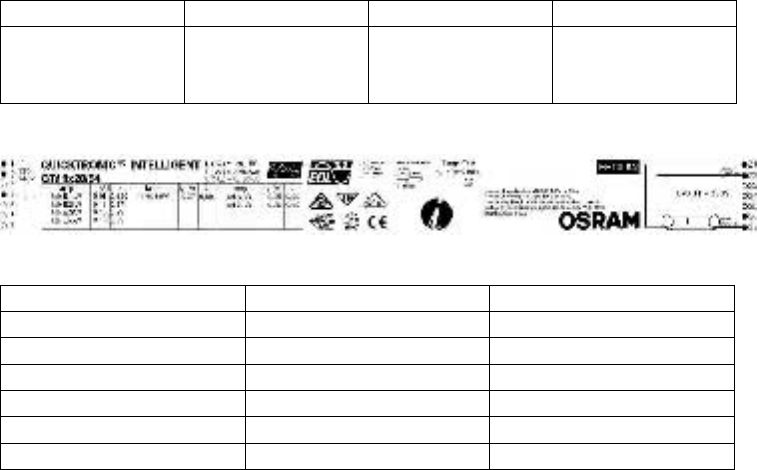Instruction manual

29
3.1.4 Insulation
Depending on the type of terminal the length of insulation to be stripped
from the ends of the cables is different. The exact value can be found on
the ECG.
WAGO 250 WAGO 251 WAGO 251-mini
Stripped
Insulation
[mm]
8-10 8.5 - 11 8.5 - 11
3.1.5 Terminals
h = 30 mm h = 21 mm
QT-FQ…CW WAGO 251
QT-FH MULTI…CW WAGO 251
QT-FH…F/CW WAGO 251 mini
QT-FQ…F/CW WAGO 251 mini
QT-FQ 2x80 WAGO 251 mini
QTi WAGO 251 mini
3.1.6 Cable routing
To ensure good radio interference suppression as well as maximum safety
and reliability, the following rules for cable routing should be observed:
1.) Cables between ECG and lamp (HF cables) should be
kept as short as possible to reduce electromagnetic
interference. Please pay attention to the maximum
recommended cable lengths as indicated on the ECG
(see also overview in 7.1ff)
2.) Mains and lamp cables should never be routed in
parallel. Keep HF cables and mains cables as far away
from one another as possible (e.g. 5 to 10 cm). This
avoids mutual interference between mains and lamp
cables.
3.) Lay HF cables away from earthed metal surfaces (if
possible several cm away) to reduce capacitive
interference.
4.) If long HF cables are unavoidable (e.g. in master-slave
circuits) they should be twisted together.
5.) Keep mains cabled in the luminaire as short as possible
to reduce interference.
6.) Do not lay mains cables too close to the ECG or the
lamps. This applies in particular to through-wiring.
7.) Avoid crossing mains cables and lamp cables; if this is
not possible, they should cross at right angles to reduce
mains and HF interference.
8.) Lamp cables at high potential (see section 7.1ff „Hot
wires“) must be kept as short as possible, particularly
with luminaires for tubular fluorescent lamps such as
FH
®
…HE and FQ
®
…HO.










